If you’ve never heard of Nunavut, you are not alone. Despite encompassing 1/5 of Canada’s landmass, Nunavut has stayed off the radar even for Canadians themselves.
This limited popularity, however, only adds to its charm. To visit Nunavut is to explore a truly off-the-beaten-path destination.
The scenery, for one, is epic. Rolling hills of tundra stretch into the distance, uninterrupted by towns, roads or even trees. Icebergs meander along the coastline, silent giants broken free from northern glaciers.

And the quirky way of life will have you forgetting you’re in Canada – snowmobiles zip through the streets in the winter and ATVs are parked at the grocery store in the summer. Nunavut is an experience in the unknown and unfamiliar.
This article is a guest post. Mikaela is the storyteller behind Voyageur Tripper, a blog dedicated to outdoor adventure. Her passions include whitewater canoeing, anything in the arctic and helping people get outside and find adventure.
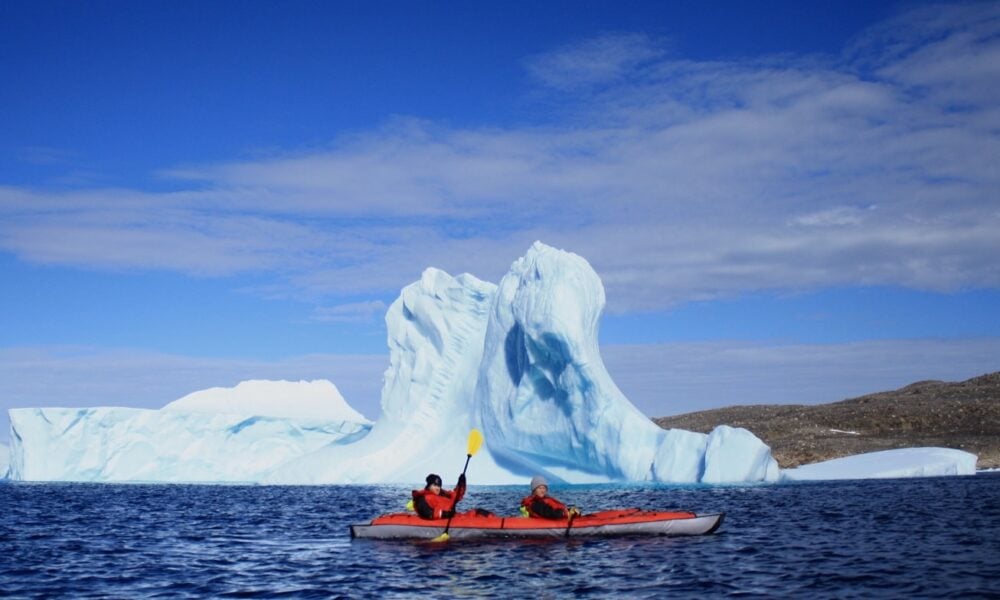
Planning a visit to Iqaluit – the capital city of Nunavut
With all its beauty and charm, you’d expect Nunavut to be a tourist destination, but visiting Nunavut tends to be prohibitively expensive. An arctic safari or week-long stay at a remote lodge will easily exceed $5000, excluding flights.
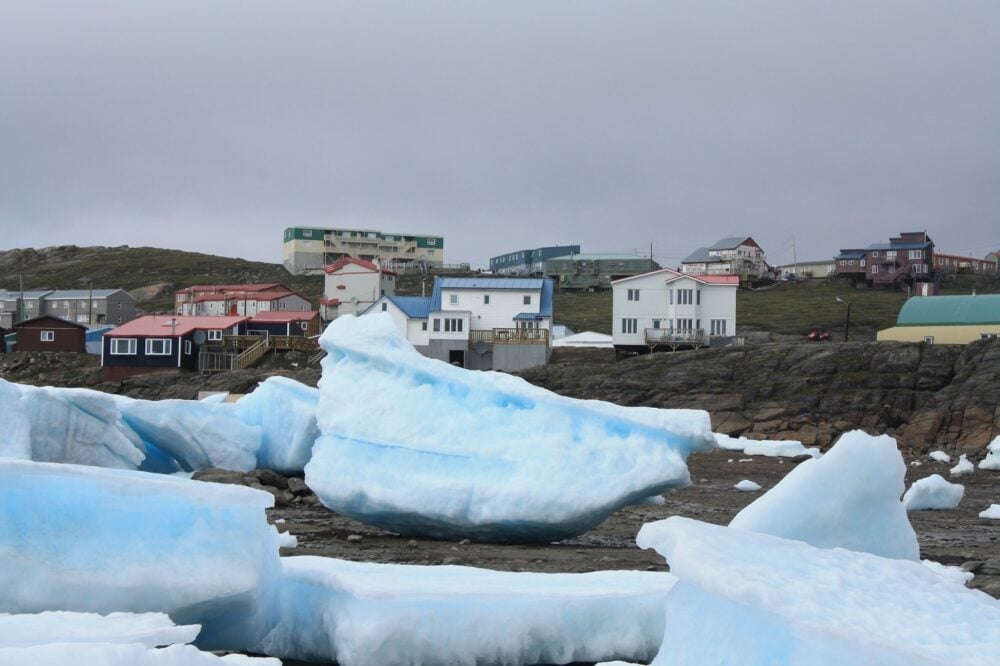
However, a visit to Iqaluit, the capital city of Nunavut, is much more feasible. Iqaluit allows travelers to experience a taste of the arctic while being much more budget friendly.
In this post, I hope to inspire you visit Iqaluit for yourself, and give you all the information to make it happen.
This post contains some affiliate links. If you make a qualifying purchase through one of these links, I may receive a small percentage of the sale at no extra cost to you.

How to get to Iqaluit, Nunavut
When I tell people about my two trips to Iqaluit, I am always met with astonishment.
Whomever I’m speaking with assumes it must be incredibly difficult to get to Iqaluit – it’s so remote! In reality, it is fairly easy to visit Iqaluit. Expensive, yes, but not difficult.
There are direct flights to Iqaluit from Ottawa and Montreal*, each of which takes about four hours. So getting to Iqaluit itself is fairly straightforward.
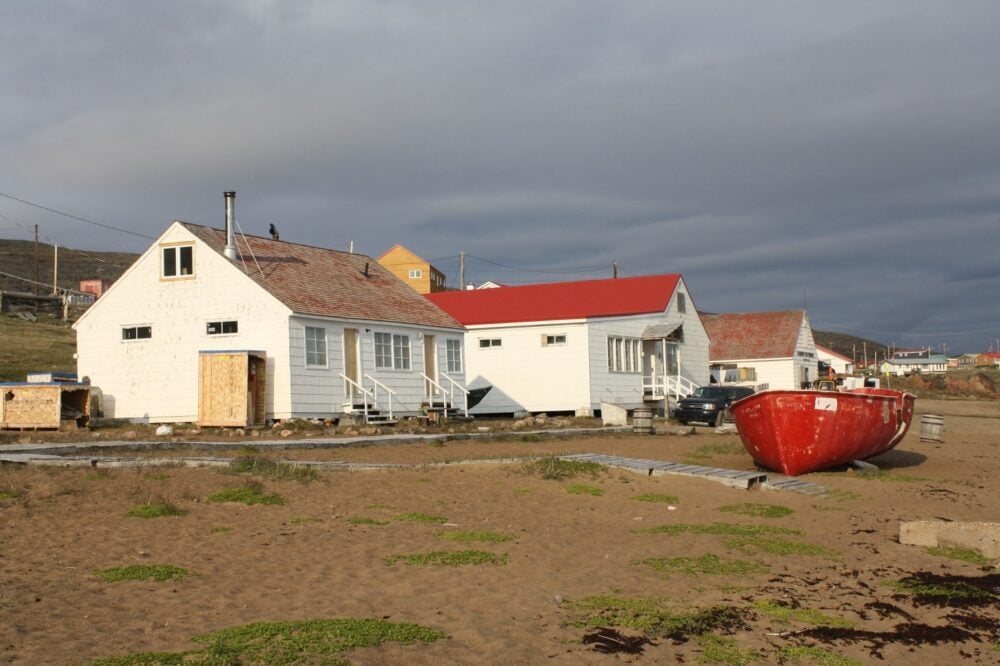
What isn’t straightforward is getting an affordable ticket. A one-way ticket from Ottawa or Montreal to Iqaluit will be about $850. In order to get an affordable ticket ($230 round trip) you need to have Aeroplan.
I won’t go into much detail on this, as I’ve written an entire post on How to Visit Nunavut on the Cheap, where I include how to get inexpensive airfare.
*The Montreal-Iqaluit flight is technically not direct. The plane lands in Kuujjuaq, Quebec to drop off passengers, but you don’t need to exit the plane yourself so it might as well be direct.
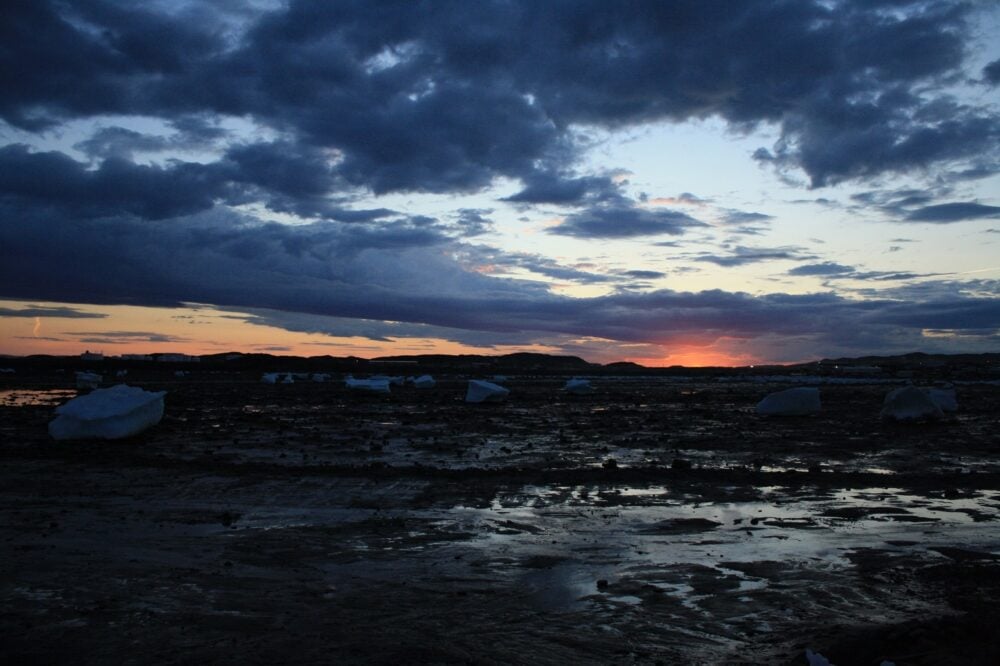
Things to do in Iqaluit
There are so many arctic activities to do during your visit to Iqaluit.
Just outside the town, the arctic ocean and expansive tundra stretch for miles and miles waiting to be explored. Even in town, there are a number of activities you can do to learn more about Inuit and their culture.
Catch the northern lights
Seeing the northern lights is a common spectacle in the winter. To see the northern lights in the more pleasant, warmer months, visit Iqaluit in March or October.
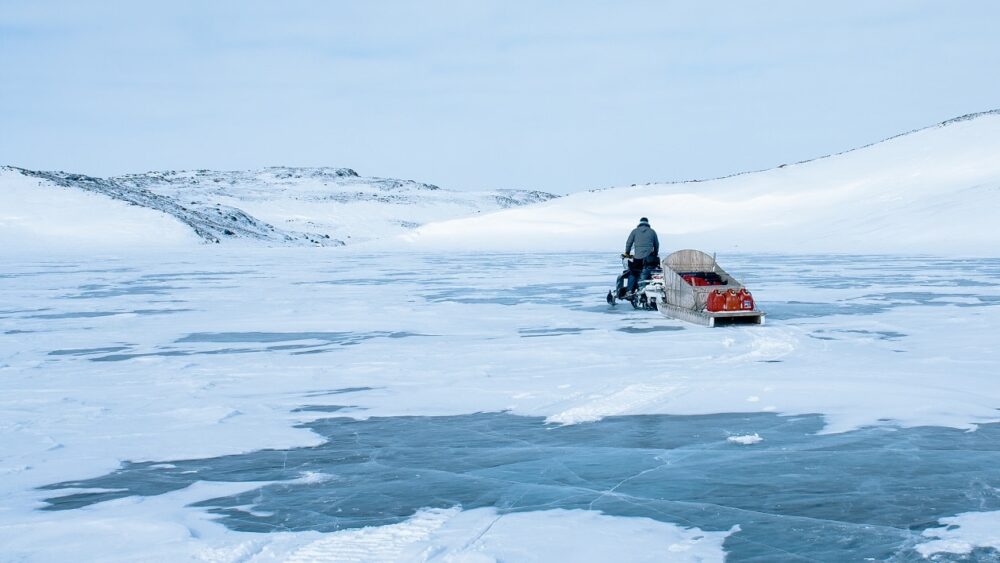
Go snowmobiling
Snowmobiling is easily one of my favourite activities in Iqaluit. I love zipping over the frozen arctic ocean or the snow covered hills of the tundra. If you want to go snowmobiling, visit Iqaluit in March or April when the bay is still frozen, but the days are getting longer and warmer.
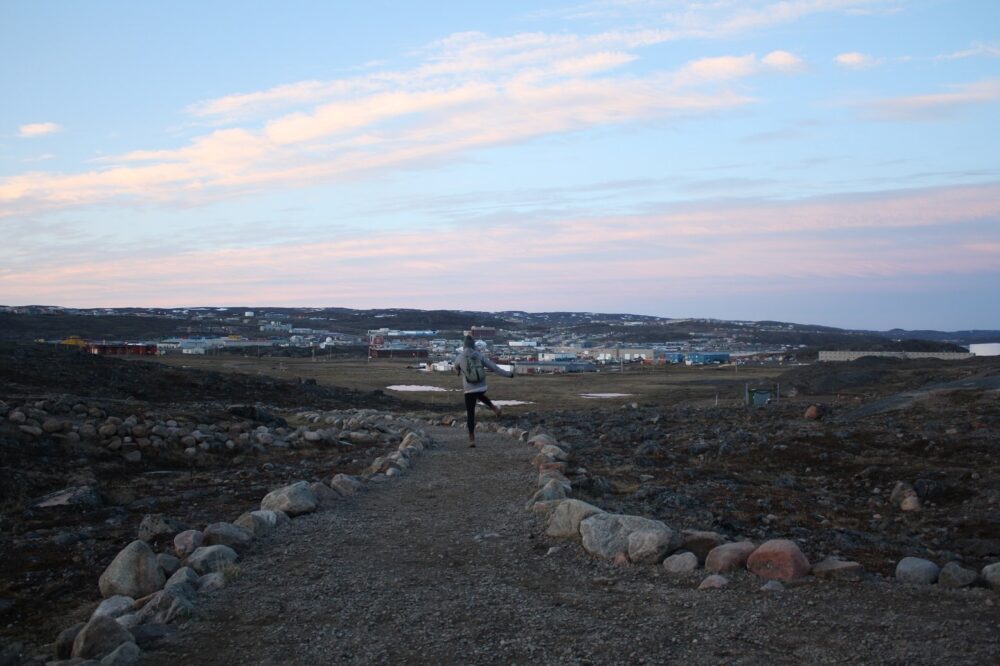
Go dog sledding
Dog sledding was once an integral part to life in the north, so it’s a fitting activity for your arctic adventure.
If you want to go dog sledding, visit Iqaluit in March or April. Also, you have the option between a half-day and full-day dog sledding tour.
Pro tip: Go with the half-day tour. Sitting in a sled for longer than four hours will make your toes numb and your legs stiff.
Visit the art museum and visitor center
Both the art museum and the Unikkaarvik visitor center offer a window into Inuit culture.
Read about the history of people on the land before it was Nunavut, watch videos from different communities, see examples of traditional ceremonies and artwork.
There is so much to learn at the art museum and visitor’s center. Plus, the buildings are right next to one another.

Attend a festival or community event
There are several events in the spring and summer months you can attend if you are a visitor to Iqaluit, Nunavut.
Toonik Tyme takes place in April and is a celebration of the arrival of spring. Alianait is a music festival at the start of July featuring artists from across the territories and even Greenland. Or attend the celebrations for Indigenous People’s Day in June.
Go hiking
There are several options for hiking around Iqaluit. You can walk along the river at Sylvia Grinnell Territorial Park or explore the coastline connecting Iqaluit to Apex (a smaller town just outside of Iqaluit).
Both of these trails can be done unguided, just ensure you tell someone at your accommodations about your plans and when you’ll be back. For other hikes on the tundra, hire a local guide to take you.
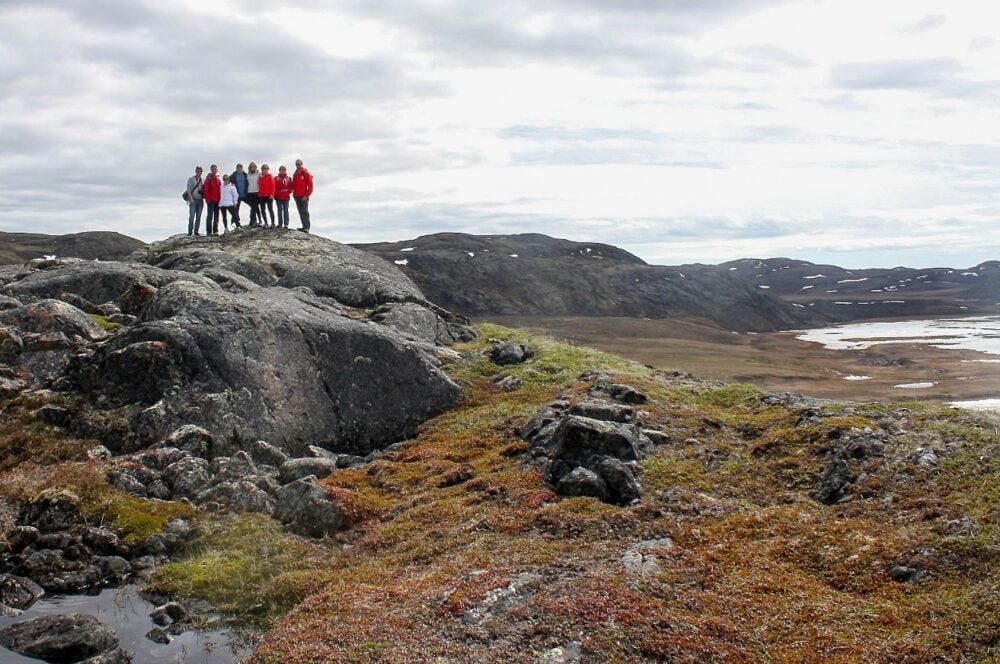
Go kayaking
Once the ice on the bay has started melting, you can go kayaking with a local outfitter. You will see Iqaluit from a different perspective on the bay and wander in between the ice. It was one of my favourite activities when I was living in Iqaluit.

Go ATVing
Head out further into Sylvia Grinnell Territorial Park on an ATV with a local outfitter. Or explore one of the inland rivers that snakes its way to the arctic ocean. ATVing is a great way to get out of town and explore even more of the tundra.
The best time to visit Iqaluit
There are some destinations you can visit anytime of year and have a great time – Nunavut is not one of those destinations.
I don’t recommend travelers visit Nunavut between November and February. It’s too dark and far too cold – you won’t be able to do many of the activities listed above.
I also don’t recommend visiting Nunavut in May or June; this is a shoulder season. The sea ice is often too thin to go snowmobiling, but there is too much ice to go kayaking. It’s just an awkward time.
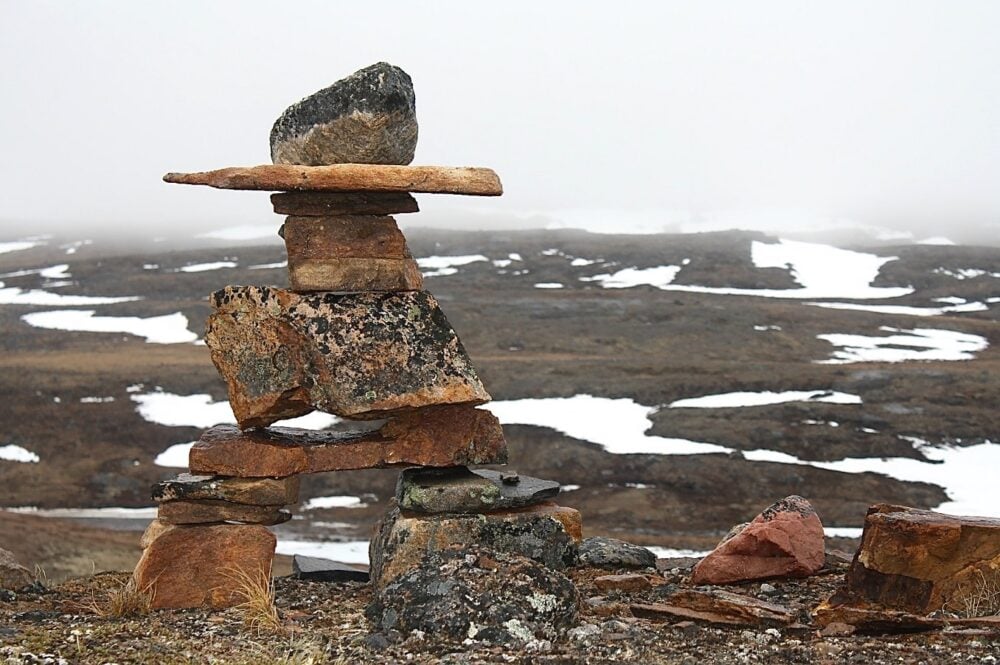
If you want to do winter activities, I recommend March and April. There are about 12 hours of daylight during this time and the bay is still frozen, allowing you to snowmobile or dog sled over it.
If you want to do summer activities, I recommend July through October. During this time the temperature is warm, and the is tundra exposed and ready for hiking. Of these months, July has the longest days (20+ hours) but there are also the most mosquitos. August is still warm, with slightly shorter days.
September and October will bring vibrant fall colours to the tundra and the chance of seeing the northern lights.
Depending on the event you want to attend, April, June or July would be the best times to visit Iqaluit for cultural activities. Check the event websites for the exact dates prior to booking your trip.

Where to stay in Iqaluit
There are a few hotels in Iqaluit, my favourite being Accommodations by the Sea. The Discovery and The Frobisher Inn are also options.
However, I would recommend looking at Airbnb first. Eating out is very expensive, so access to a kitchen will save you money.

Where to eat in Iqaluit
The Frobisher Inn and the Discovery are the two popular restaurants in Iqaluit. The Storehouse is a great pub and my personal favourite for casual dining. In any of these options, expect a meal for one person to be $40 or more.
This is why I recommend getting accommodation that allows you to cook. Groceries are expensive in Iqaluit, but much more reasonable that eating out.
Pro tip: Bring food with you from the south. Spices, tea, instant coffee, pasta noodles, oats – all these and more can be brought up in your checked luggage.
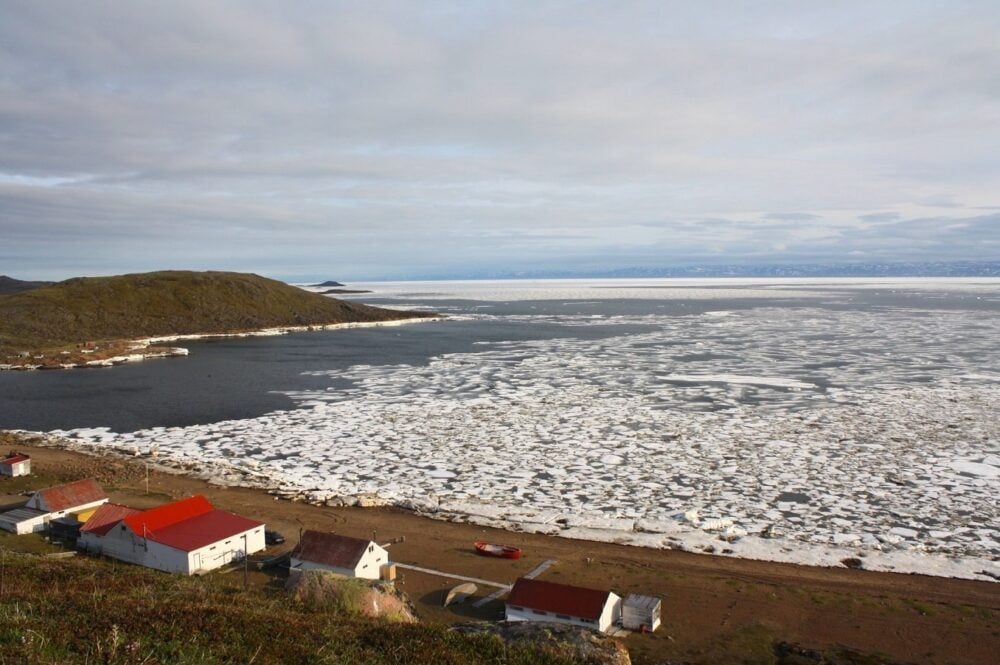
Insider tips for a smooth visit to Iqaluit
- Don’t visit Nunavut alone. The total cost for activities and accommodations are considerably cheaper if you can split with someone else. For example, a 4 hour snowmobiling adventure is $330 for one person, but $440 for two people. You save $110 just by having a friend to go with. Likewise, your accommodation costs are cut in half when you share with another person. Save money, bring a friend!
- A taxi to anywhere in town is $7 per person. Anywhere that roads can take you is the same price.
- It’s not as cold as you are expecting, but dress warmly anyways. Regardless of the time of year you visit Nunavut, pack warmer clothing than you think you will need. Summer is actually quite pleasant (I wore shorts in August a few times) but then again, I was also hit with a snowstorm in July. It happens.
- When packing, remember the importance of layers and pack some non-cotton clothing for outdoor adventures.
- Buy art at The Storehouse. The Storehouse is the pub in the main part of town. It’s a cozy place with billiard tables and lots of seating. Good food too. Inuit artists frequent The Storehouse selling their work. It is considerably cheaper to buy art from the artist directly, rather than from the museum or art store (artists typically accept only cash).




